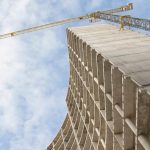Earthquake load takes place due to the inertia force produced in the building because of seismic excitations. Inertia force is varies with the mass. The higher mass of the structure will imply that the earthquake loading will also be high.
When the earthquake load exceeds the moment of resistance offered by the element, then the structure will break or damage.
The magnitude of earthquake loading depends upon the weight or mass of building, dynamic properties of the building and difference in stiffness of adjacent floors along with the intensity and duration of the earthquake.
Earthquake load acts over the surface of a structure placed on ground or with adjacent building.
Earthquake load depends on the following factors, 1) Seismic hazard, 2) Parameter of the structure and 3) Gravity load.
Each building or structure is assigned a seismic group of design to identify the force and intensity of earthquake. It will be used to plan the buildings in such a way to reduce the damage caused by the earthquake. Some buildings located in the same locality might get differently affected by earthquake loading. Flexibility of the building plays one of the major roles during earthquake.
The ratio of height to width defines the flexibility. Greater the ratio, greater will be the flexibility of building. Another physical behavior is stiffness of the building. For the taller building, stiffness will be less.

Posted inDesign of Tall Structures


Comments are closed